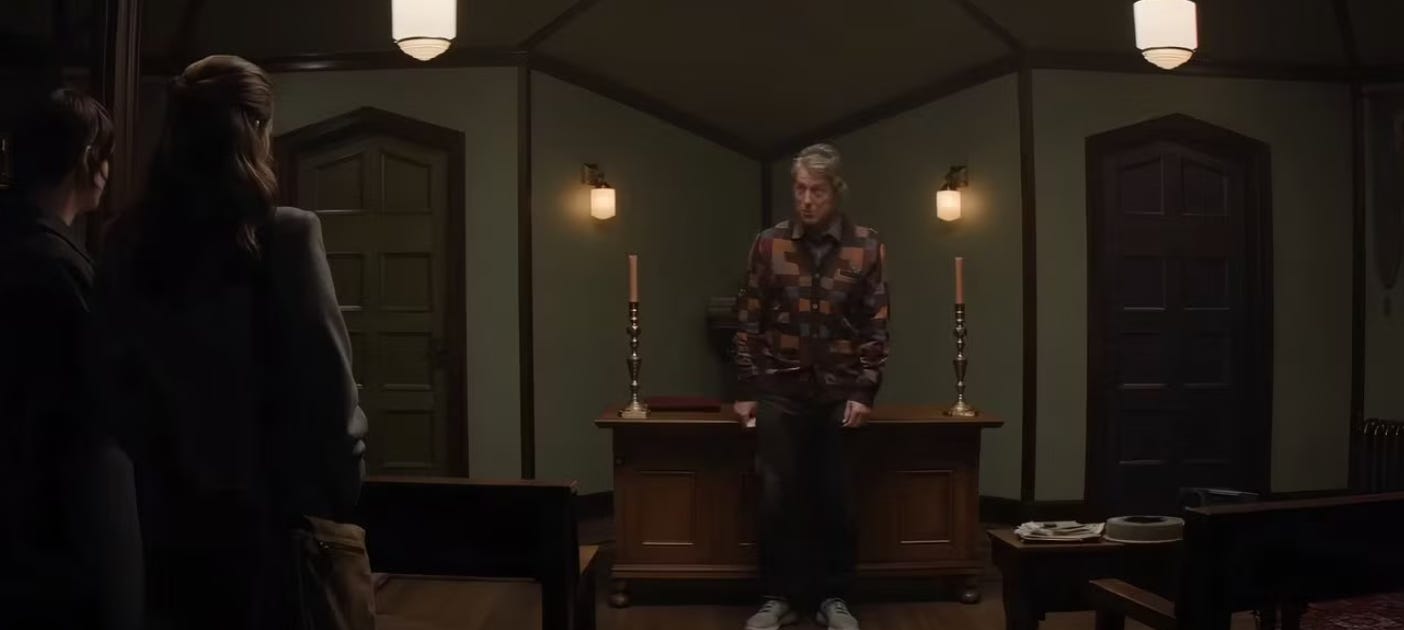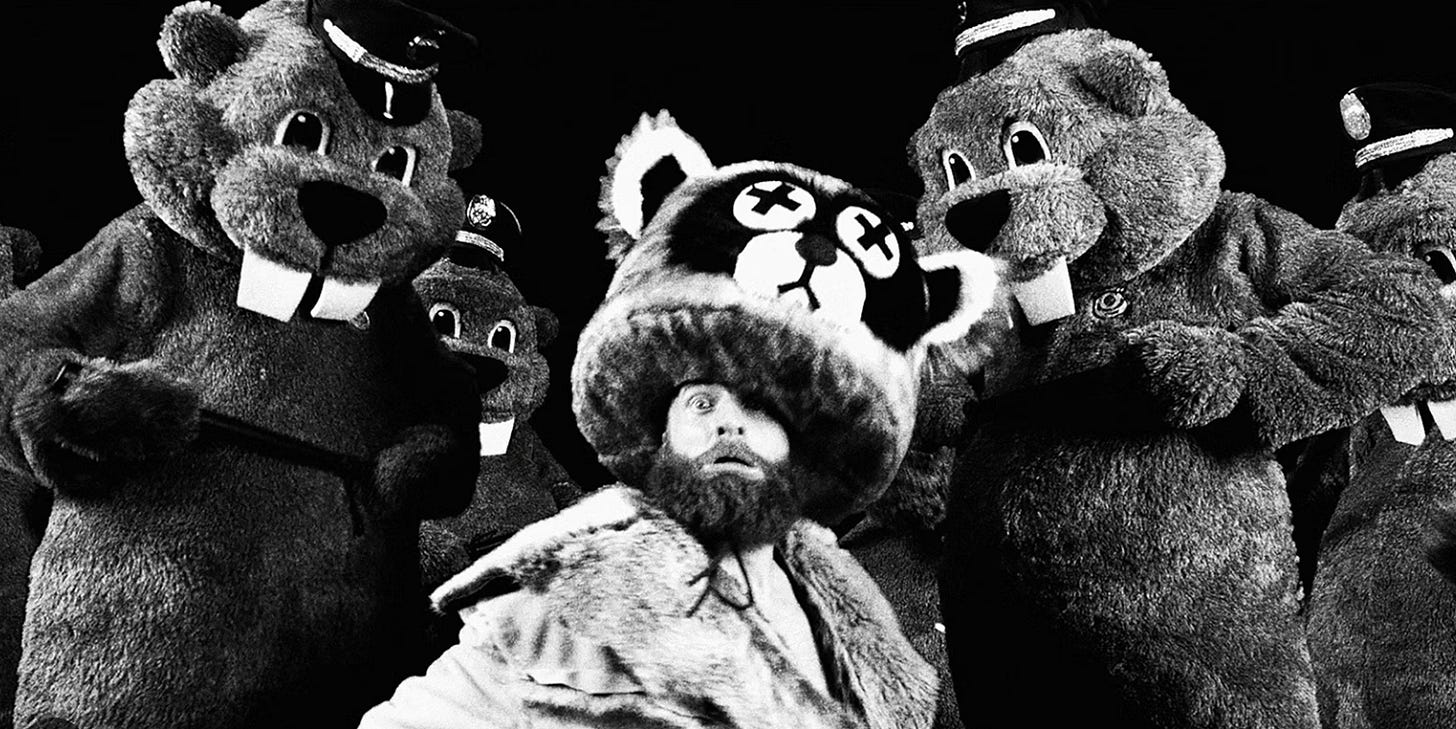I’m a believer in year-end top-10 lists. They’re fun, and you can mine them for recommendations.
But 2024 at the movies isn’t over, not close. That’s because most of us have no legal access to a number of this year’s releases, including a few that will be up for awards.
Let’s try something else: what were the best movie *moments* of 2024 so far?
I’m liking this concept as I type it, because it allows back in all of the stinkers, retreads, and franchise fare that most of your top-10 lists are going to keep out.
In no particular order, here goes.
The Sharks in “Gladiator 2”
Ridley Scott’s “Gladiator 2” was in essence a reboot and retread of the still-beloved “Gladiator.” For those of us who noticed that, you either caught up on sleep in the theater or you found some much-needed inspiration in disparate moments.
For me, I found inspiration, briefly.
It was the sharks.
Imagine the Roman Colosseum flooded. Then add gladiator-slaves forced to re-enact famous naval battles, such as the Battle of Actium. This the Romans really did, although not during the period in which the film was set.
As usual, Scott couldn’t help himself. Few bombastic moviemakers could. To spice up what already is a remarkable sight, he added sharks.
I believe they were great white sharks, too, though I’m no marine biologist.
How did the Romans keep the sharks alive during transport? How could they even have transported them from the sea?
“Who cares,” says Sir Ridley, as he usually does, “it’s a f—ing movie!”
Of course the sharks had a delicious meal of fresh gladiator carpaccio.
No Drones in “Civil War”
Now I’m focusing on an absence. Among the many science-fictional oversights in Alex Garland’s “Civil War” was why in the world the movie mostly failed to include modern technology, such as cellphones and drones.
As you probably know, this one’s about a possible future civil war in the U.S., between Washington DC and a secessionist conglomerate backed by — um — California and Texas, two states that obviously get along very well politically.
Despite presumably being set in the future, the tech in it was more Vietnam-era than it was Terminator-esque.
The movie came out in April, and thereafter the news from rest of the year made this move look all the more bizarre.
Besides the infinite number of pieces about how drone tech has been completely changing war and war strategy in the Russia-Ukraine war, we also had the mysterious drones over America this past month.
Everybody knows about those, everybody has speculated, many have been annoyed. That’s all in real life.
At the movies? Well, don’t look hard in “Civil War” for any of these mysterious flying objects! They just aren’t there at all.
The only possibility I can think of that would save “Civil War” here is that you could claim the movie is alternate-history, and not set in the near-future. Thereby, in this alternate timeline, they somehow did not invent drones, inspite of their rather awesome helicopters pictured below.
I found almost nobody who took the movie that way, though.
The Monopoly Discussion in “Heretic”
Here we have a film with great promise. And right in the middle is a golden, arresting conversation helmed by the actor Hugh Grant, who plays right along with the film’s wacky premise.
That premise is that a secluded middle-aged man has invited two young Mormon missionary girls to his house, so that they could proselytize to them. Since this was marketed as a horror movie, you knew the man had ulterior motives of course.
But the movie toys with our expectation of those ulterior motives. For awhile, it looks like he’s not trying to kill them per se, but rather to kill the religion in them. He’s craftily de-converting them from Mormonism.
That de-conversion includes his long speech about how all religions iterate. Islam, he claims, is an iteration of Christianity, which is an iteration of Judaism, which was an iteration of . . . and so on. Therefore all religion is bunk, or something.
To explain iterations, he uses both the history of the Parker Brothers game Monopoly, as well as the history of the song “Creep” by Radiohead.
As strange as that seems in writing, it’s beyond seductive in the film as a speech. All credit to Mr. Grant for going into this role with his greatest gusto.
The scene culminates in one of those spicy choices that tickle my brain. Grant’s character offers the girls a choice to leave his house, showing them two doors. One door he labels “belief” and the other “unbelief.” The girls must choose the right door so that they can hightail it out of the creep’s house.
Unfortunately “Heretic” devolves into a pretty obvious horror film, de-converting me of its excellence.
I’ll still remember this arresting scene for a long time.
The Talking-Killer Scene in “Carry-On”
About this I wrote the following in my snapshot letterboxd.com writeup: “I have never seen a Talking Killer cliché like this movie has, though. This is the Kong, the Godzilla, the Empire State Building of Talking Killer scenes.”
Netflix’s Christmas action-thriller “Carry-On” tried to be a new kind of “Die Hard,” although involving not a badass cop but a 30-something TSA agent whose career might’ve dead-ended. This man gets a chance to try to stop a few terrorists from smuggling a nerve-gas bomb onto a domestic flight.
In the film, the agent is blackmailed into doing the bidding of the terrorists. That includes ignoring the big, bad suitcase that goes through the TSA scanner.
Once he does that, he meets up with the arch terrorist in an airport restroom. The TSA has gone in there to retch, feeling guilty about his coerced compliance.
At this point, there is no good use for this TSA agent in the bad guy’s plans. He’s been a prop. Now he’s nothing. Sane criminals, I’m told, would get rid of him.
Of course, the killer doesn’t kill the agent, as they do in these things. He also needlessly reveals his face to theTSA agent. He also needlessly talks to him about his plans, a lengthy needless explanation of the plans, for a long, long time.
That’s the Platonic essence of Talking-Killer scenes right there: an astoundingly pointless scene of exposition that tells the hero everything he needs to know to stop the bad guy. It also, practically, gives the hero his first glimpse as to what this bad guy looks like, so that he can tell anybody else who can help him out.
Now since I have a low view of humanity when it comes to doing evil — criminals, even brilliant ones, do very stupid things — I can just believe this scene’s plausibility slightly more than the sharks in “Gladiator 2.”
But not by much.
The Ending of “Conclave”
In my original review of this PG-rated thriller, I suggested that the ending was completely ambiguous, even an ideological Rorschach test.
Unfortunately this has turned out correct, exposing a few short-sighted people who quickly dismiss the film by calling it “woke,” including many commenters on my Youtube channel.
I see what they mean. And, without giving any spoilers away, that’s a plausible viewing.
I’m convinced, however, that the movie’s director Edward Berger is much craftier than that. He’s one of the very few directors to make an anti-war movie that nevertheless admits that some males get their kicks out of going to war and getting to kill a few other guys, a documented fact in the wars I’ve studied.
So when the shocker of the ending comes, a viewer has to deal with what I think are a number of delights:
how plausible do you think the ending is?
what is it saying to you?
what is its political agenda?
Because we’ve all been primed by fear-inducing social-media algorithms, plus set up by constant election provocations, we’re likely to see the first thing that comes to mind. And that’s possibly going to be the only thing.
That’s a test of the viewer, because you are supposed to see *more than one thing*, many things, so many it should provoke a lot of critical thought.
Sadly, for “anti-woke” people, they are dominated too much by their assumed enemy’s ideological principles. So they only see antagonism towards themselves.
But Conclave’s ending says that there are a number of possible right and wrong answers, all at once. The movie’s agenda, I think, is uncertainty. Go listen again to the main character’s speech near the beginning, his prayer for God to foreground doubt itself in the minds of the cardinals.
That means any progressive-leaning viewing could be correct, but — *gasp!* — any trad-leaning viewing could be correct as well, including those who see the more liberal cardinals as schemers who are self-deceived and ruiners of the church they claim to love.
Since I prefer ambiguity and complexity, especially when they allow for the exposing of hidden presuppositions, I ended up really liking this movie.
May the movies always increase our imaginative wisdom.
The RPG Levelling-Up in “Hundreds of Beavers”
Here’s my favorite movie of the year so far.
This wacko, low-budget silent-movie about a fur trapper trying to rack up animal pelts — although they are the dumbest-looking animal costumes you’ve ever seen — seemed to me like the great marriage of Karel Zeman, Terry Gilliam, Benny Hill, Buster Keaton, and Looney Tunes.
But that right there was just a collection of my old-man references. When my teenage daughter walked in and started watching this, she said the movie was just like RPG videogames. Bingo!
Yes, that too, and it’s why the movie seems to be doing well as a word-of-mouth hit with young letterboxd types.
In the movie, the fur trapper starts with nothing. He must go collect stuff in his environment. Collecting it, using his wits, failing miserably and repeatedly, he then heads to the lone store where he can level up.
Everybody has seen this kind of figure in a videogame. Why have I never seen it in a movie?
Maybe this is too literal for you. But it fits with the movie’s spirit — and if you are going to be a black-and-white silent feature, something has to appeal to a new young crowd.
Bugs Bunny would be in awe.










